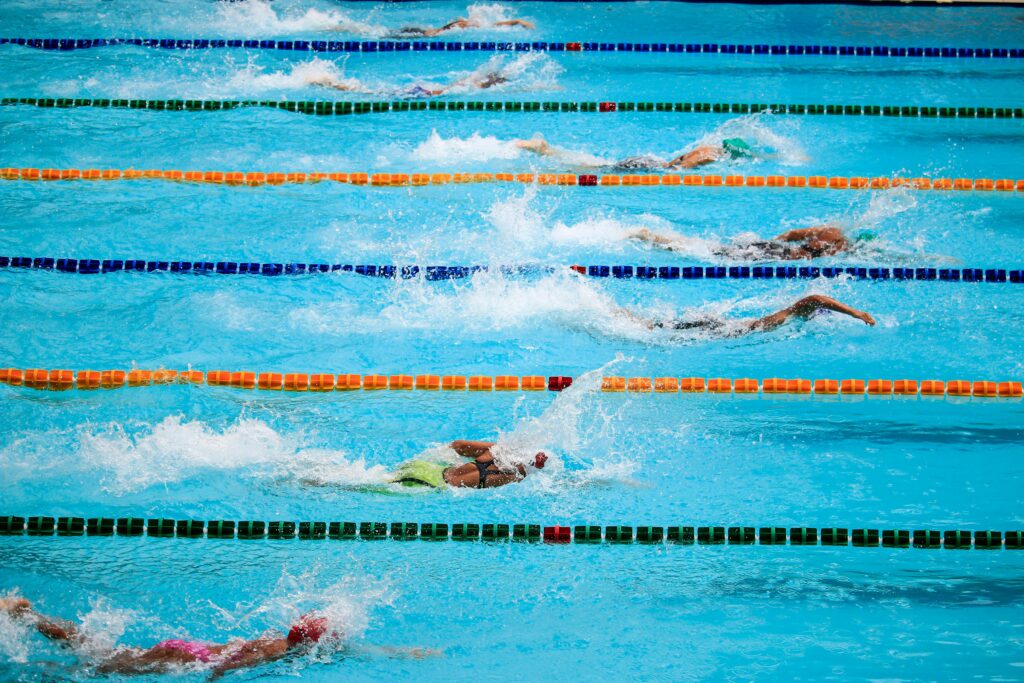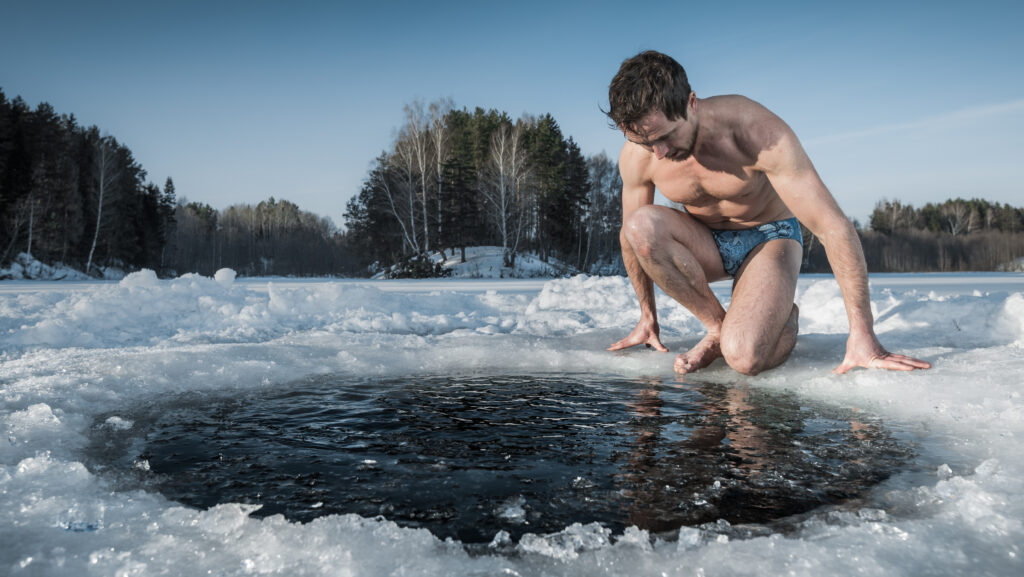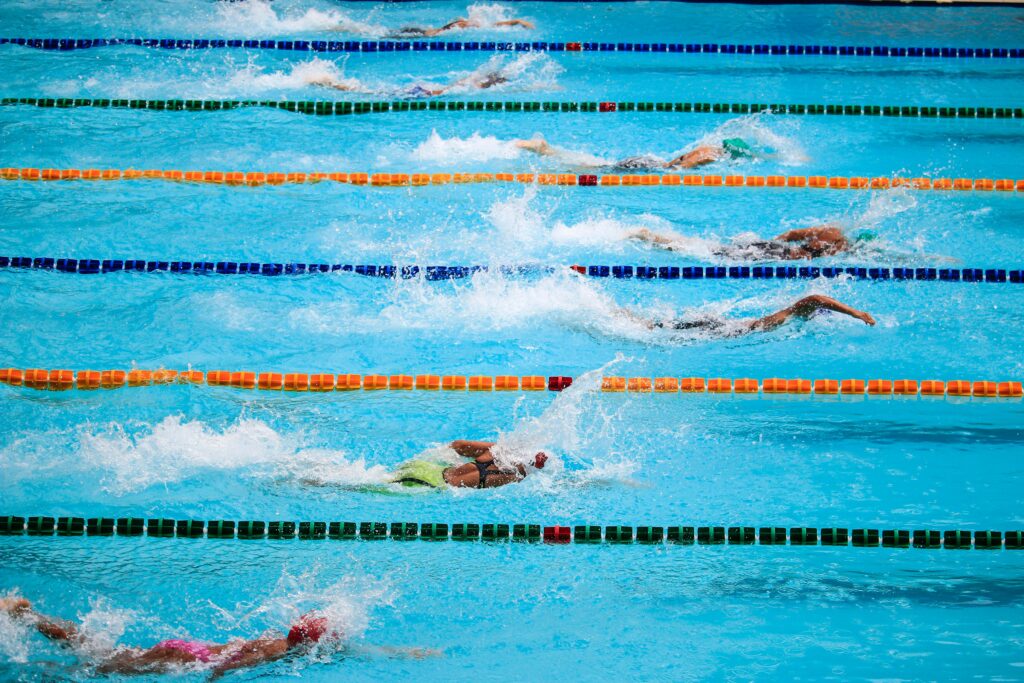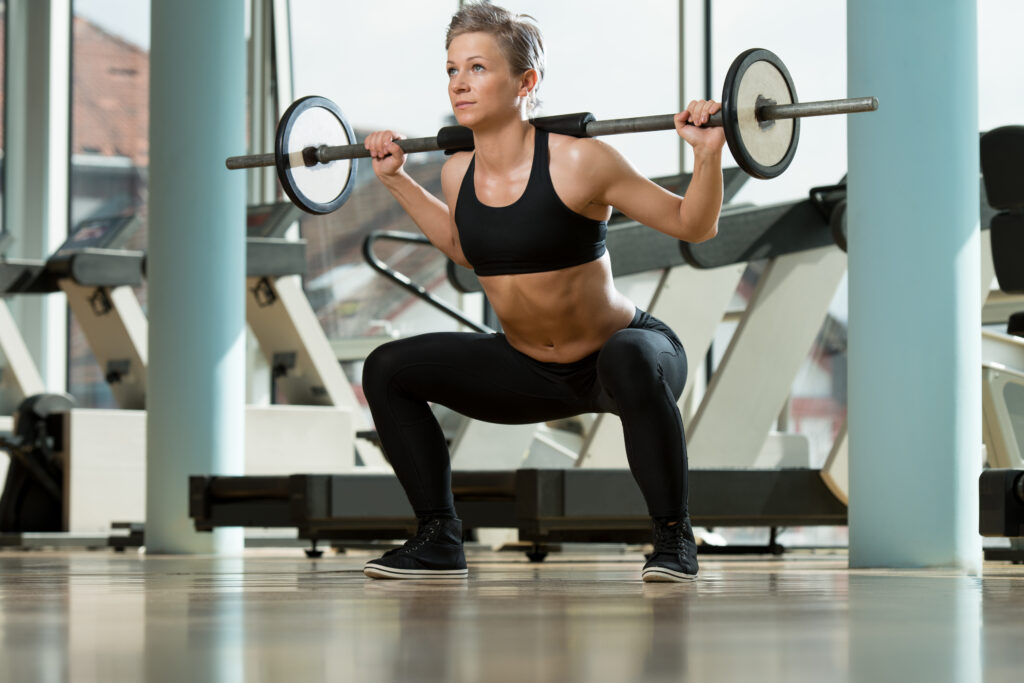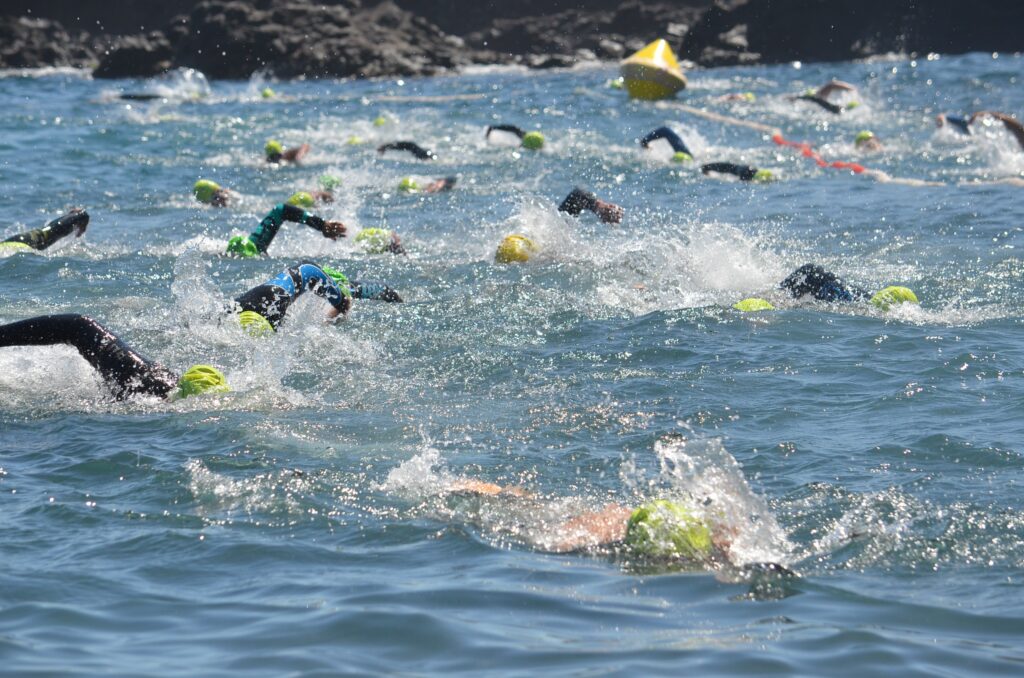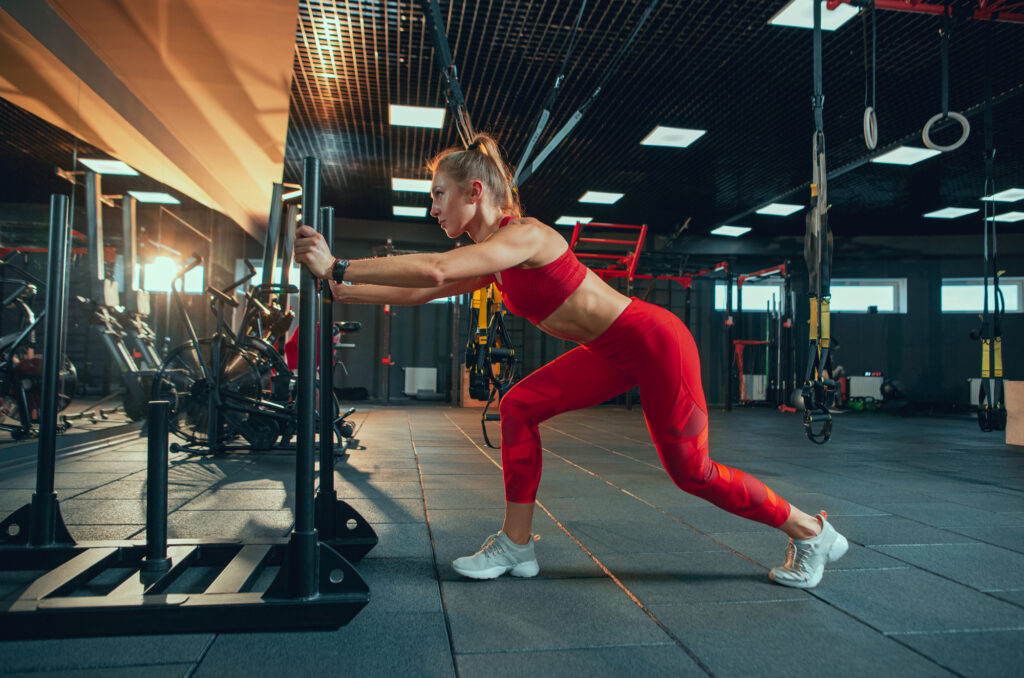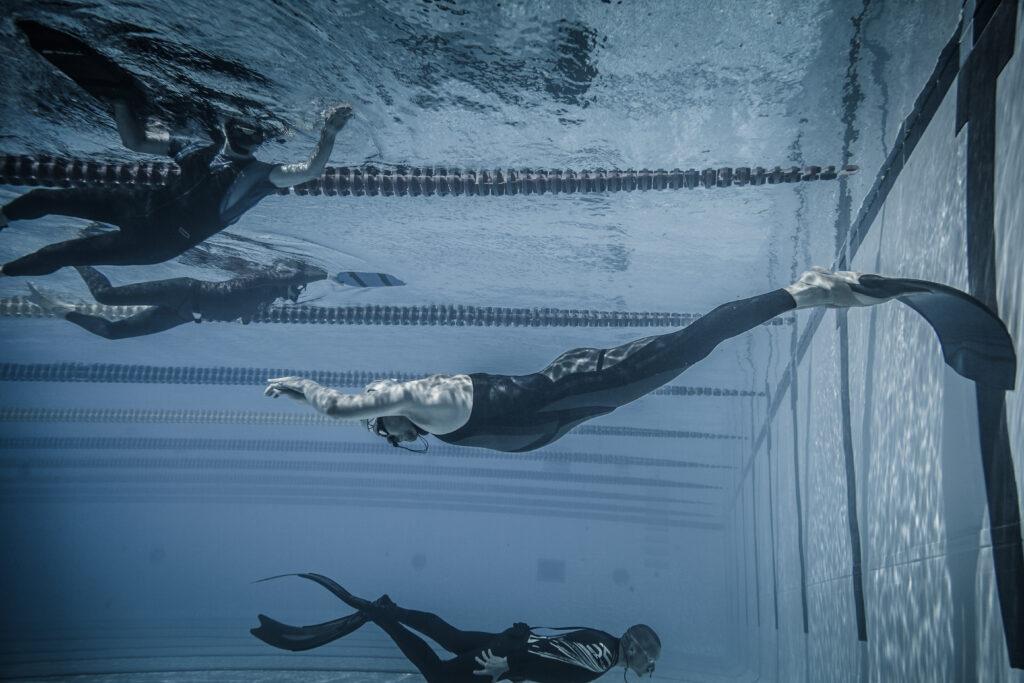When it comes to swimming the 50m freestyle, every second counts. Whether you’re an experienced swimmer or just starting out, there are ways to improve your speed and get quicker at this challenging event. In this article, we’ll explore some of the best techniques and tips to help you swim faster and shave valuable seconds off your time.
First, it’s important to understand the basics of freestyle swimming. This includes proper body positioning, arm and leg movements, and breathing techniques. Once you have a solid foundation of these fundamentals, you can start to fine-tune your technique and focus on boosting your speed. This may involve incorporating drills, working on your turns and dives, and monitoring your progress over time.
Ultimately, getting quicker at the 50m freestyle requires a combination of skill, practice, and dedication. By following the tips and techniques outlined in this article, you can develop a stronger, faster, and more efficient swimming style that will help you achieve your goals in the water.
Key Takeaways
- Understanding the basics of freestyle swimming is crucial for improving your speed.
- Enhancing your technique, incorporating drills, and fine-tuning your turns and dives can help you get quicker at the 50m freestyle.
- With practice and dedication, you can develop a stronger, faster, and more efficient swimming style that will help you achieve your goals in the water.
Understanding Freestyle Basics
Freestyle, also known as front crawl, is the most popular swimming stroke used in competitive swimming. It is an efficient and fast swimming technique that can help you improve your speed and endurance in the water. In this section, we will cover the basic elements of freestyle that you need to understand to get quicker at your 50m freestyle.
Body Position
The first and most important element of freestyle is body position. Keeping your body in a horizontal position with your hips and legs close to the surface of the water will help reduce drag and increase your speed. To achieve this position, you need to keep your head down, your hips up, and your body straight. You should also avoid lifting your head too high or too low, as this can cause your hips to drop and increase drag.
Breathing
Breathing is another important element of freestyle. It is essential to breathe regularly to ensure that you get enough oxygen and maintain your speed and endurance. The most common breathing technique in freestyle is to inhale through your mouth when your head is turned to the side and exhale through your nose and mouth when your face is in the water. You should also try to keep your breathing relaxed and rhythmic to avoid getting tired too quickly.
Arm Stroke
The arm stroke is the main propulsive element of freestyle. It consists of four phases: the catch, the pull, the finish, and the recovery. During the catch phase, your hand enters the water in front of your head and your forearm and hand form a 90-degree angle. During the pull phase, you pull your arm back towards your hip, generating forward propulsion. During the finish phase, you sweep your hand towards your hip, and during the recovery phase, you bring your arm back to the starting position.
Leg Kick
The leg kick is the final element of freestyle. It helps to maintain your body position and provides additional propulsion. The most common leg kick technique in freestyle is the flutter kick, which involves kicking your legs up and down alternately. You should try to keep your legs close together and avoid kicking too hard, as this can increase drag and slow you down.
In summary, understanding the basic elements of freestyle is essential if you want to get quicker at your 50m freestyle. By focusing on your body position, breathing, arm stroke, and leg kick, you can improve your speed and endurance in the water.
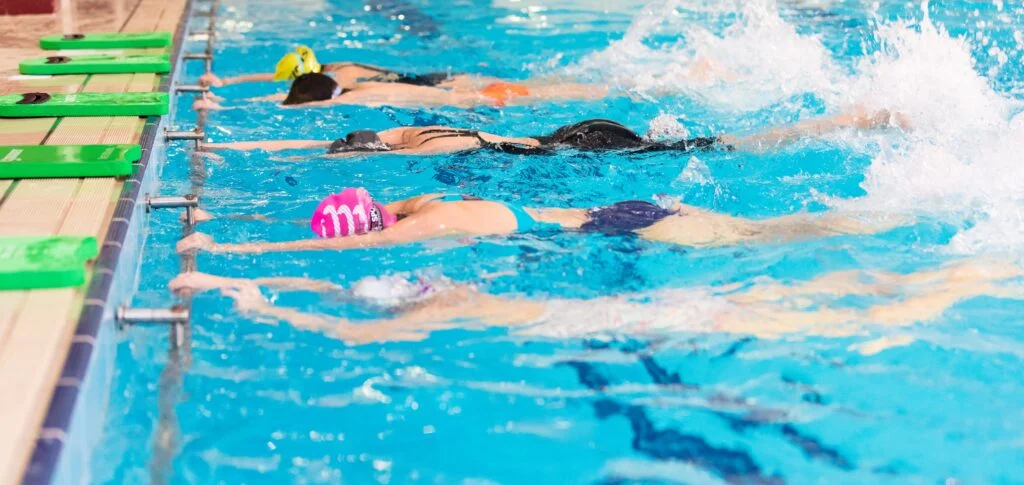
Enhancing Swimming Technique
To improve our 50m freestyle time, we need to focus on enhancing our swimming technique. This will help us swim faster and more efficiently. There are three key areas we need to focus on: proper body position, effective kick technique, and efficient arm movement.
Proper Body Position
Maintaining a correct body position in the water is essential for swimming faster. We need to keep our head down and our body horizontal, with our hips and legs close to the surface of the water. This will help reduce drag and increase our speed.
To maintain good body position, we should keep our eyes focused on the bottom of the pool and our head in a neutral position. We should also engage our core muscles to keep our body straight and stable in the water.
Effective Kick Technique
A strong and efficient kick is crucial for swimming faster. We need to use our legs to generate power and momentum in the water. To do this, we should focus on kicking from the hips and keeping our legs close together.
We can also use different types of kicks, such as the flutter kick or the dolphin kick, depending on our individual strengths and weaknesses. It’s important to find the kick that works best for us and practice it regularly.
Efficient Arm Movement
Our arm movement is another important factor in swimming faster. We need to use our arms to pull ourselves through the water and generate forward momentum. To do this, we should focus on a few key techniques:
- Pulling with a high elbow: This helps us engage our back muscles and generate more power in our stroke.
- Keeping our hands relaxed: A tight grip can slow us down and waste energy.
- Maintaining a consistent stroke rate: We should aim to keep a steady rhythm with our arm movements, rather than rushing or slowing down.
By focusing on these key areas of technique, we can improve our 50m freestyle time and become faster and more efficient swimmers.
Boosting Speed
If you want to get quicker at your 50m freestyle, there are a few things you can do to improve your performance. In this section, we will discuss two training methods that can help you boost your speed: strength training and endurance training.
Strength Training
Strength training is an essential part of any swimmer’s training regimen. By building strength, you can improve your power and speed in the water. Here are a few exercises that you can incorporate into your strength training routine:
| Exercise | Description |
|---|---|
| Squats | Squats are a great way to build lower body strength. Start with your feet shoulder-width apart and your toes pointed slightly outward. Lower your body as if you were sitting in a chair, keeping your back straight and your knees behind your toes. |
| Lunges | Lunges are another great lower body exercise. Start with your feet shoulder-width apart and take a big step forward with one foot. Lower your body until your front knee is bent at a 90-degree angle, keeping your back straight and your knee behind your toes. |
| Pull-ups | Pull-ups are an excellent upper body exercise that can help you build strength in your back and arms. Grab a pull-up bar with an overhand grip and pull your body up until your chin is above the bar. Lower your body back down to the starting position and repeat. |
Endurance Training
Endurance training is another important aspect of improving your speed in the water. By building endurance, you can swim faster for longer periods of time. Here are a few endurance training exercises that you can try:
- Interval Training: Interval training involves swimming short distances at a high intensity, followed by a period of rest. This type of training can help you build endurance and improve your speed.
- Long Distance Swimming: Swimming long distances can also help you build endurance. Try swimming a mile or more at a steady pace to build your endurance.
- Hypoxic Training: Hypoxic training involves swimming without taking a breath for as long as possible. This type of training can help you build your lung capacity and improve your endurance.
In conclusion, strength training and endurance training are two effective ways to improve your speed in the water. By incorporating these training methods into your routine, you can build strength, endurance, and ultimately, improve your 50m freestyle time.
Incorporating Drills
If you want to get quicker at your 50m freestyle, incorporating drills into your training routine is essential. Drills help you focus on specific aspects of your technique, improve your form, and ultimately swim faster. Here are some drills you can include in your training routine:
Kick Drills
- Vertical Kicking: Stand in the deep end of the pool with your arms at your sides and your head above water. Kick as hard as you can for 30 seconds, then rest for 10 seconds. Repeat for 5-10 sets. This drill helps improve your leg strength and kicking technique.
- Flutter Kick on Your Back: Lie on your back with your arms at your sides and your head above water. Flutter kick as hard as you can for 30 seconds, then rest for 10 seconds. Repeat for 5-10 sets. This drill helps improve your kicking technique and body position.
Pull Drills
- Catch-Up Drill: Swim freestyle with one arm extended in front of you and the other arm at your side. When you complete a stroke with the extended arm, bring it back to your side and switch arms. This drill helps improve your arm technique and body position.
- Fist Drill: Swim freestyle with your fists closed instead of open. This drill helps improve your forearm strength and pulling technique.
Remember to focus on proper technique and form during these drills. Incorporating them into your training routine will help you swim faster and improve your overall performance.
Importance of Breathing
Breathing is an essential component of swimming, especially in the 50m freestyle. Proper breathing technique can help you swim faster, longer, and more efficiently. Here are some reasons why breathing is important in the 50m freestyle:
Oxygen Intake
Breathing is necessary to intake oxygen, which fuels our muscles and helps us swim faster. In the 50m freestyle, swimmers typically take between 1 and 5 breaths. It’s important to practice breathing every 3 or 4 or 5 strokes in practice every day to develop your lungs gradually over time.
Reduces Drag
Lifting your head to breathe causes your hips to drop, which creates more resistance for you to work against. Breathing to the side keeps your hips higher, reducing drag and making you swim faster.
Maintains Rotational Momentum
During freestyle, you rotate side to side. Breathing to the side helps maintain your rotational momentum and keeps your stroke smooth and efficient.
Bilateral Breathing
Bilateral breathing, or breathing on both sides, is important for developing a stronger, fuller stroke that is also technically even. It helps balance out your entire body and can make you a faster freestyler.
In conclusion, breathing is a crucial aspect of the 50m freestyle. Practicing proper breathing technique can help you swim faster, reduce drag, and maintain rotational momentum. Incorporating bilateral breathing into your training can also help develop a stronger, more balanced stroke.
Fine-Tuning Turns and Dives
When it comes to improving your 50m freestyle time, the importance of perfecting your turns and dives cannot be overstated. A well-executed turn or dive can give you a significant advantage over your competitors, while a poorly executed one can cost you precious seconds.
To fine-tune your turns, focus on the following:
- Approach: As you approach the wall, maintain your speed and keep your head down. Your last stroke should be a strong one, and you should aim to touch the wall with both hands simultaneously.
- Flip: Tuck your chin to your chest and bring your knees up to your chest as you perform the flip. The flip should be quick and smooth, and you should push off the wall with your feet as soon as your body is facing the other direction.
- Underwater: Use the momentum from your flip to propel yourself forward underwater. Keep your head down and your arms tight to your sides to reduce drag. You can take up to 15 metres underwater before you have to surface for air.
When it comes to dives, the key is to minimise resistance and maximise speed. Here are a few tips:
- Positioning: Stand with your toes on the edge of the starting block and your heels hanging off. Keep your arms straight and your hands together, with your fingertips just over the edge of the block.
- Spring: Push off the block with as much force as possible, using your legs to propel you forward. Keep your head down and your body streamlined.
- Entry: Aim to enter the water with as little splash as possible. You can achieve this by keeping your arms tight to your sides and your body straight as you enter the water.
By focusing on these key elements of your turns and dives, you can shave valuable seconds off your 50m freestyle time and improve your chances of success in competition.
Monitoring Progress
Monitoring your progress is crucial when trying to improve your 50m freestyle time. It helps you to identify areas where you are excelling and areas where you need to improve. There are several ways to monitor your progress, including:
Timing Yourself
One of the easiest ways to monitor your progress is to time yourself regularly. You can time yourself for a full 50m sprint or break it down into smaller distances such as 25m or 10m. Record your times and compare them over time. This will help you to see if you are improving or not.
Video Analysis
Another way to monitor your progress is through video analysis. Record yourself swimming and then watch the footage back. Look for areas where you can improve your technique, such as your arm pull or leg kick. You can also compare your video footage to that of professional swimmers to see how you measure up.
Tracking Your Workouts
Tracking your workouts is another way to monitor your progress. Keep a log of your workouts, including the distance you swam, the time it took you and any notes on how you felt during the workout. This will help you to see your progress over time and identify any patterns in your training.
Seeking Feedback
Finally, seeking feedback from a coach or experienced swimmer is a great way to monitor your progress. They can watch you swim, give you tips on how to improve your technique and track your progress over time. This can be especially helpful if you are unsure of what areas you need to work on to improve your 50m freestyle time.
By monitoring your progress regularly, you can identify areas where you need to improve and track your progress over time. This will help you to stay motivated and achieve your goals in the pool.
Conclusion
In conclusion, there are several ways that we can get quicker at our 50m freestyle. By incorporating a variety of techniques and training methods, we can improve our speed and endurance, and ultimately achieve our goals.
Firstly, it is important to focus on our technique and form. By perfecting our stroke, we can reduce drag and improve our efficiency in the water. This can be achieved through regular drills and feedback from a coach or experienced swimmer.
Secondly, we can improve our strength and power through strength training exercises such as squats, lunges, and deadlifts. This can help us generate more force in our strokes and improve our overall speed in the water.
Thirdly, we can incorporate interval training into our workouts. This involves alternating periods of high-intensity effort with periods of rest or lower intensity. This can help us build our endurance and improve our ability to maintain a fast pace for longer periods of time.
Finally, it is important to maintain a healthy and balanced diet, as well as getting enough rest and recovery time. This can help us maximise our performance in the pool and avoid injury or burnout.
By following these tips and incorporating them into our training regimen, we can get quicker at our 50m freestyle and achieve our swimming goals.
Frequently Asked Questions
What are some techniques to improve my 50m freestyle time?
Improving your 50m freestyle time requires a combination of technique, strength, and endurance. Some techniques that can help you improve your time include improving your body position, streamlining your stroke, and increasing your stroke rate. You can also work on your breathing technique and timing to help you swim more efficiently.
What is the average time for a 50m freestyle swim?
The average time for a 50m freestyle swim can vary depending on age, gender, and skill level. However, a competitive time for a male swimmer is around 22-28 seconds, while a competitive time for a female swimmer is around 26-32 seconds.
What is the current world record for the 50m freestyle?
The current world record for the 50m freestyle is held by César Cielo of Brazil, who swam the distance in 20.91 seconds in 2009.
How can I drop time in my 50m freestyle swim?
To drop time in your 50m freestyle swim, you can focus on improving your technique, increasing your strength and endurance through training, and working on your mental preparation and focus. You can also work on your starts and turns to gain an advantage over your competitors.
What are some common mistakes that can slow down my freestyle?
Some common mistakes that can slow down your freestyle include poor body position, over-rotating your hips, lifting your head too high, and crossing your arms over your body. Breathing too frequently or at the wrong times can also slow you down.
How can I increase my speed in the 50m freestyle?
To increase your speed in the 50m freestyle, you can focus on increasing your stroke rate, improving your technique, and building your strength and endurance through training. You can also work on your starts and turns to give yourself an advantage over your competitors. Mental preparation and focus can also play a big role in increasing your speed.

